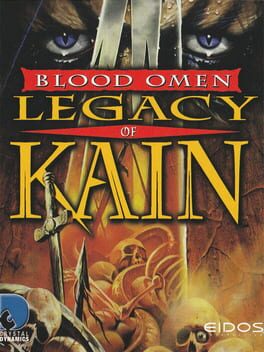
The game elaborates on one of the two endings to Blood Omen, taking place in Nosgoth's dark future where Kain rules an empire of vampires, and introduces a new protagonist, his lieutenant Raziel, who is executed by Kain and resurrected to exact revenge on his brethren and his master. It was a commercial and critical success, selling 1.5 million units worldwide, but the strong reactions of players to its cliffhanger ending impelled the developers to allay concerns that it was released unfinished.

Soul Reaver was hailed as a technical achievement for its plane-shifting gameplay mechanics and its data-streaming game engine, which eliminated the loading pauses that were prevalent in PlayStation-era games.
#Legacy of kain blood omen world record series
Hennig, the game's director, likened the technological advance from Blood Omen to Soul Reaver to the evolution of The Legend of Zelda series from the Super Nintendo to the Nintendo 64-bringing the franchise into 3D while maintaining a similar style. It originated as an independent concept inspired by Biblical themes called Shifter, devised by Crystal Dynamics' Amy Hennig and Seth Carus, but, at the request of company executives, was integrated into the Legacy of Kain universe in pre-production.

Legacy of Kain: Soul Reaver was released in 1999 for the PlayStation and Microsoft Windows, and was ported to the Dreamcast in 2000. Blood Omen introduces Nosgoth, a fictional land designed with novel-like complexity, and gives the player control of Kain, a newly resurrected vampire seeking revenge against his murderers and a cure for his vampiric curse. Selling points included its 50+ hour length and the wide array of items and abilities the player character commands. Developed as a 2D action-adventure game with role-playing game elements, it debuted to positive critical and commercial reception. Pursued in hopes of bringing a strong narrative and artistic cinema to consoles, it was built as "a game which adults would want to play", featuring an unconventional hero and gameplay that demanded thought as well as reflexes. Dyack conceived the " vampire project" under the title The Pillars of Nosgoth in 1993, and Crystal Dynamics producer Lyle Hall chose this fantasy concept over two other proposals (one of which was Too Human). In 1997, it was ported to Microsoft Windows. īlood Omen: Legacy of Kain was created by Silicon Knights under the direction of Denis Dyack, with assistance from publisher Crystal Dynamics, and was released in 1996 on the PlayStation. Series director Amy Hennig described the Pillars of Nosgoth (above: in concept art, center: in Blood Omen, below: in Defiance) as "the mythological and geographical hub" of the five games.

In 2022, Square Enix sold the rights of the series to the Embracer Group, who have expressed interest in developing sequels, remakes and remasters of Legacy of Kain. The Legacy of Kain intellectual property was owned by Square Enix Europe after 2009 and mentioned under Square Enix Collective. The Legacy of Kain games have enjoyed critical success, particularly receiving praise for high-quality voice acting, narrative, and visuals, and, as a whole, had sold over 3.5 million copies by 2007.
#Legacy of kain blood omen world record free
Themes of destiny, free will, morality, redemption and the hero's journey recur in the storyline, which was inspired by ancient literature, horror fiction, Shakespeare's plays and gnosticism. Legacy of Kain: Soul Reaver introduced another antihero protagonist, Raziel the adventures of both characters culminate in Legacy of Kain: Defiance.

The series takes place in the fictional land of Nosgoth-a gothic fantasy setting-and revolves around Kain's quest to defy his fate and restore balance to the world. Focusing on the eponymous character of Kain, a vampire antihero, each title features action, exploration and puzzle-solving, with some role-playing game elements. To date, five games comprise the series, all initially developed for video game consoles and later ported to Microsoft Windows. The first title, Blood Omen: Legacy of Kain, was created by Silicon Knights in association with Crystal Dynamics, but, after a legal battle, Crystal Dynamics retained the rights to the game's intellectual property, and continued its story with four sequels. Legacy of Kain is a series of dark fantasy action-adventure video games primarily developed by Crystal Dynamics and formerly published by Eidos Interactive. PlayStation, Microsoft Windows, Dreamcast, PlayStation 2, Xbox, GameCube The series logo as of Legacy of Kain: Defiance


 0 kommentar(er)
0 kommentar(er)
